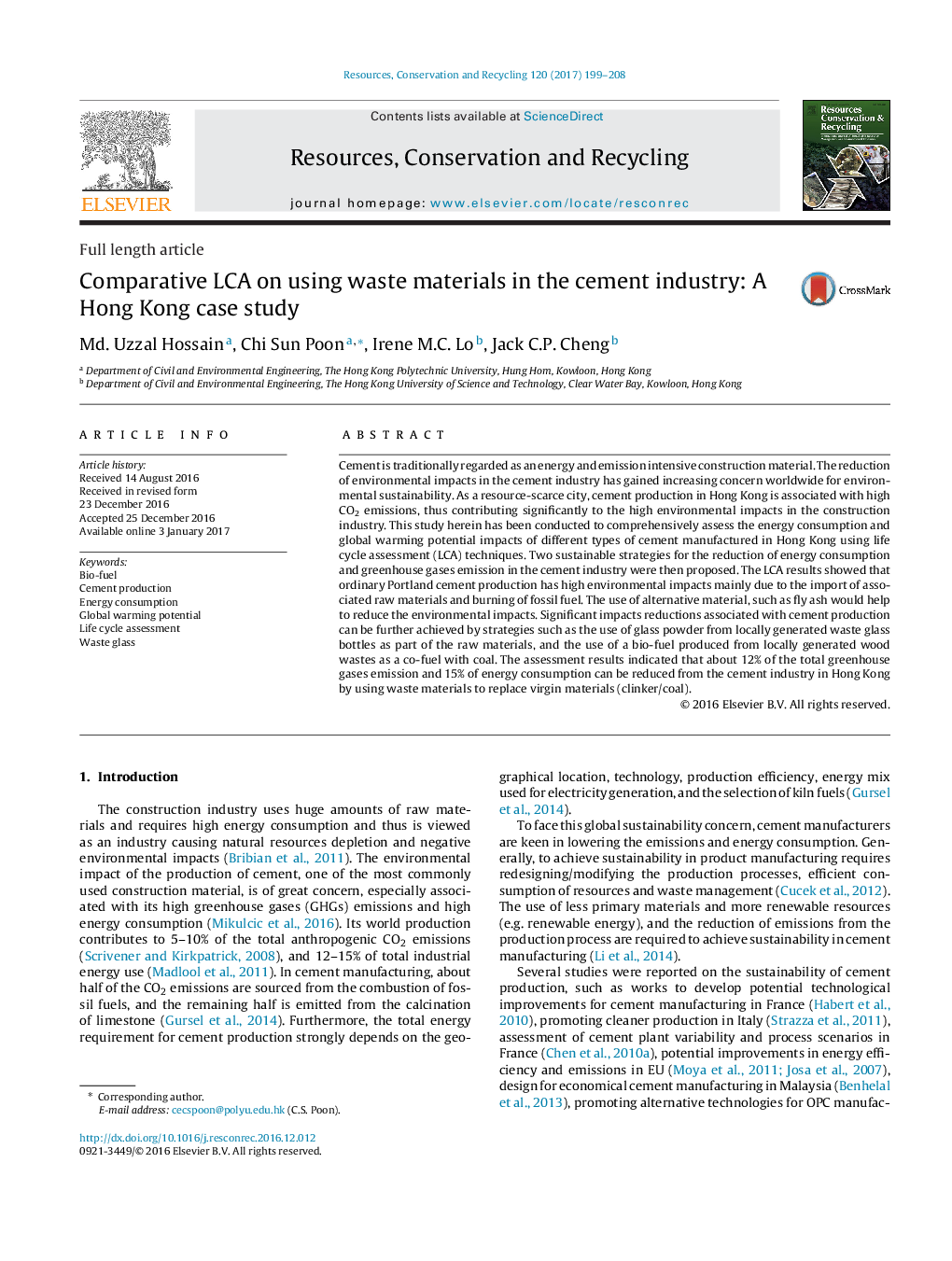| Article ID | Journal | Published Year | Pages | File Type |
|---|---|---|---|---|
| 5118699 | Resources, Conservation and Recycling | 2017 | 10 Pages |
â¢Evaluated energy consumption and GWP of different cements based on their strength class.â¢Proposed several alternative strategies for cleaner cement production.â¢Adopting waste glass as raw material and bio-fuel from wood wastes as co-fuel can reduce impacts significantly.â¢Utilizing waste materials in cement production can be an important outlet for wastes management.
Cement is traditionally regarded as an energy and emission intensive construction material. The reduction of environmental impacts in the cement industry has gained increasing concern worldwide for environmental sustainability. As a resource-scarce city, cement production in Hong Kong is associated with high CO2 emissions, thus contributing significantly to the high environmental impacts in the construction industry. This study herein has been conducted to comprehensively assess the energy consumption and global warming potential impacts of different types of cement manufactured in Hong Kong using life cycle assessment (LCA) techniques. Two sustainable strategies for the reduction of energy consumption and greenhouse gases emission in the cement industry were then proposed. The LCA results showed that ordinary Portland cement production has high environmental impacts mainly due to the import of associated raw materials and burning of fossil fuel. The use of alternative material, such as fly ash would help to reduce the environmental impacts. Significant impacts reductions associated with cement production can be further achieved by strategies such as the use of glass powder from locally generated waste glass bottles as part of the raw materials, and the use of a bio-fuel produced from locally generated wood wastes as a co-fuel with coal. The assessment results indicated that about 12% of the total greenhouse gases emission and 15% of energy consumption can be reduced from the cement industry in Hong Kong by using waste materials to replace virgin materials (clinker/coal).
